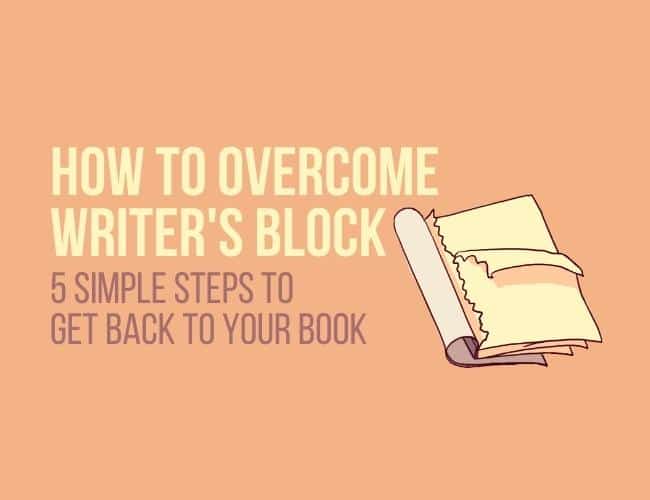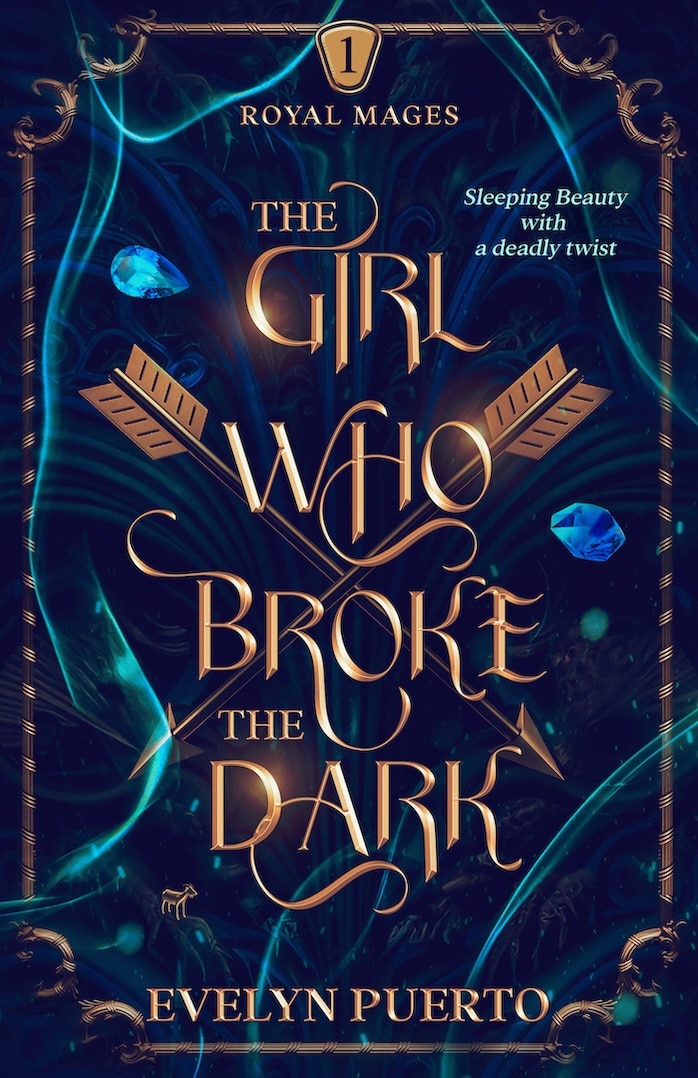It’s practically inevitable. You’re rockin’ and rollin’ through your writing process, you let the creative juices flow, and then you reach a sudden halt: You’re blocked. And you have no idea how to overcome writer's block.
The words won’t come. It seems like there’s nothing more, and yet you’ve got things to do. Deadlines to meet. A writing schedule to stick to. What can you do?

It can seem impossible to write another word when you experience a creative block. The good news is that with a handful of steps, you can readjust your writing routine and reenergize your creative flow.
It can be done.
Here’s how to write a book when you’ve got writer’s block.
Want to learn how to write a book from start to finish? Check out How to Write a Book: The Complete Guide.
What is Writer’s Block?
This seems obvious: Writer’s block is a writer’s inability to write. When in this position, writers can find themselves sitting at their desk for hours—and no amount of inspiring writing quotes can get the writing session productivity flowing again.
Writer’s block can be the result of several problems, like low self-confidence, poor planning, and becoming overly distracted by social media. But it can affect even experienced writers with several books completed.
Something has happened either in your mind or in your story and it's keeping you from progressing on the writing project. Assessing the problem and recapturing momentum is the only way you can save your writing day and make progress on your book.
Let's look at a few ways to do just that.
How to Write a Book When You've Got Writer's Block: The 5-Step Plan
Ready to overcome your block and revitalize your writing? Here's your creative process recovery plan:
Step 1: Take a Step Back
Some coaches out there will encourage you to plow onward no matter what. When it's writing time, sit down at the same time of day and put some stress on those writing muscles. Pound it out.
That may be good advice for a determined few, but for the rest of us it’s just plain impossible.
What do you do then?
Simple: Stop.
Stop writing and take a step back. (Not forever. Just for a set amount of time.)
Consider where you are stuck. Are you having trouble starting a project? If so, you may need a quick writing exercise to get the words flowing, such as the one here in our post about inciting incidents (which happen at the beginning of a story).
Do you have a premise? Start by just trying to write out that sentence and then spend some time thinking or mind mapping what drew you to this story in the first place. Let yourself play a little.
But what if you are stuck in the middle of a story? Your writer’s block is likely caused by specific knots in your story. In other words, it’s not you—it’s your protagonist. Or your setting. Or your point of view.
Something specific to the story isn’t working as you’ve been approaching it, so you need to stop and reevaluate.
Writing a book is a lot like navigating a maze. Consider how complicated each character’s journey is. When you write the story, you’re finding your way through the labyrinth without a map.
Reaching a dead-end is the same as writer’s block. You have to stop moving forward, step back, and find your way to love writing again.
Crashing into the same wall isn’t going to solve your problems.
Remember: The block is specific, not general. You don’t suck. This moment in your storytelling life is what sucks, so you need to step away and gain some perspective.
Step 2: Emancipate Yourself
One of the reasons you’re experiencing writer's block might be an imaginary rule.
What is an imaginary rule? It’s a rule that you have created for yourself that you’re unwilling to break, and it’s killing your writing.
Have you created a self-imposed deadline for yourself? As in, “I have to have this done by July”?
Or have you read a bunch of great literature, only to demand that your first draft look and sound just like The Great Gatsby or Beloved?
Another rule I tend to create for myself is a story rule. These look like this:
- The story has to take place entirely in one room.
- The story has to be in the first-person point of view.
- This character has to die.
And so on. We make these rules for ourselves because we want to achieve greatness, or reach a particular goal in a piece of writing.
But more often than not, they tend to trap us in prisons of our own making. When we can’t meet our own impossible demands, we submit to the feeling of failure and quit.
You have to emancipate yourself from these imaginary rules. Free yourself from the bondage of perfectionism.
Identify the imaginary rule you’ve created that is holding you prisoner. Write it down in a way that frees you: “The story can take place in any room. It can be from any point of view.”
Whatever you need to free yourself from this false bondage and get back to creating with freedom.
Step 3: Unplug
To fully recover from the frustration of your writer’s block, you may need a break.
Take a short sabbatical from your labors. Unplug from the world of your writing and enjoy the things that refresh your body and spirit. Visit nature. Play with your children. Make other kinds of art. Watch your favorite movies or a season of your favorite show.
Part of the reason you need to unplug is to separate your humanity from this project. The frustration becomes personal. The rules and expectations that have been driving you become unforgiving taskmasters.
Unplugging for a period of time is the physical action you must take to redefine your writing life.
Also, you may not be able to fully emancipate yourself from your imaginary rules until you’ve unplugged. Steps two and three go hand-in-hand. Rediscovering your humanity works side-by-side with reframing your independence as a writer.
Make sure to keep your sabbatical brief, though. Give it a deadline since it can threaten your long-term productivity, and hold to it.
But let yourself live a little and reconnect with the things in real life that inspire you to create in the first place, free from crushing expectations and the feeling of failure.
Step 4: Strategize
When your retreat ends, it’s time to get back to work. But if you simply start banging your head against the same wall in the labyrinth, you’ll just end up back where you were.
Instead, plan ahead before your jump back into an overwhelming task.
A book is a large undertaking with numerous parts. Certainly there are parts where you aren’t blocked, right? Think about what's happening in those sections that produces more manageable tasks.
Here are five ways you can strategically continue to write a book when you’ve had writer’s block:
- Back up and start a scene from a different time and/or place
- Let a character fail during a scene
- In a scene between two characters, add a third character for triangulation
- Move the scene to a new, more resistant setting (location)
- Craft the scene from a different character’s point of view, or a third-person point of view
Once you’ve made a choice, try it. But be prepared for it to possibly fail. Be ready with another idea or two in your pocket. Don't be discouraged if the first idea doesn't work—even famous writers have to start again sometimes when an idea doesn't work.
Strategy isn’t just about the story itself; it’s about readying yourself for a variety of outcomes, successful or not, so you don’t end up blocked again.
Step 5: Return and Write With Freedom
The final step to overcoming writer’s block when writing a book is to return and write with freedom.
You’ve stepped back and freed yourself from the shackles of impossible expectations and faulty rules.
You’ve take a restorative sabbatical and come out of it energized, filled with ideas about new strategic approaches to your storytelling problems.
The last thing to do, then, is to write.
If all else fails, set a timer and give yourself permission to write one small section during a writing sprint. No backspace or delete keys, no editing—just write.
The Secret to Overcoming Writer's Block
See, overcoming writer’s block isn’t just about the story. It’s about the storyteller.
When done right, taking these steps builds muscle memory. Every time you conquer writer’s block, you get better at doing it. In fact, if you beat writer’s block enough, you’ll hardly ever feel truly “blocked,” but see the momentary hiccup in your process as just that: a minor nuisance that you’re an expert at dealing with.
No one is ever truly, eternally afflicted with writer’s block. The power is in your hands.
You can do it. You can write a book when you’ve got writer’s block, just like every professional writer out there.
You just have to know how.
What strategies or writing tools do you use to overcome writer's block? Let us know in the comments.
PRACTICE
Find a scene or a story you've already written. Read it.
Then, take fifteen minutes to write it again, but with a major change.
What can you change? Try one of these possibilities:
- Start it in a different time or place
- Let a character fail during the scene
- Add another character to the scene
- Write the scene from a different point of view
When you're done, share your transformed scene in the Pro Practice Workshop here and tell us what you changed (and if you’re not a member yet, you can join here). Then, leave feedback for your fellow writers on their transformed scenes as well!
You deserve a great book. That's why David Safford writes adventure stories that you won't be able to put down. Read his latest story at his website. David is a Language Arts teacher, novelist, blogger, hiker, Legend of Zelda fanatic, puzzle-doer, husband, and father of two awesome children.



0 Comments